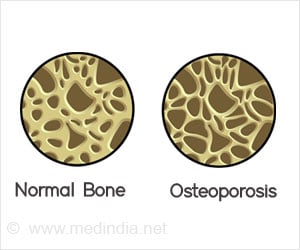Australia's legendary flying doctors continue to serve the opal miners in the country’s famed outback. Their failing eyesight is now a thing of the past with cataract and glaucoma operations
Australia's legendary flying doctors continue to serve the opal miners in the country’s famed outback. Their failing eyesight is now a thing of the past with cataract and glaucoma operations being performed on these adventurous old – timers.
Eighty years after its first bi-plane took off on May 17 1928 the Royal Flying Doctor Service is more high-tech but its patients are much the same -- the far-flung characters of the continent's remote vastness.Geoffrey McFadden drives a beat-up pick-up from the railway carriage he calls home, stranded among dumps of broken rock dreams, to consult an eye specialist who flies in from Sydney in a Beechcraft SuperKingair.
"How are your eyes?" asks opthalmologist Michael Hennessy as he and McFadden sit almost knee-to-knee and eye-to-eye in the consulting room at the community health centre.
Leaning forward, the 72-year-old miner hesitates for a moment then delivers the laconic reply: "Well, I can see you."
He's had a cataract removed and treatment for glaucoma, but on the way back home McFadden steers with a devil-may-care nonchalance down a dirt track through sun-bleached grass, open pits and dusty blonde mine rubble.
"It's the best life out here," he says, explaining why he has spent the past 25 years rummaging through the land's pale rock for the stunning multi-coloured opalesque beauty occasionally hidden within.
Advertisement
But like everybody else in Lightning Ridge, some 770 kilometres (480 miles) northwest of Sydney, the liberty-loving "bushman" acknowledges the vital role played by the flying doctors from the big city.
Advertisement
Back in Lightning Ridge, Hennessy and his five-strong team are seeing the last of the 35 or so patients they deal with on each of about six trips a year to the outpost, which has no resident eye specialists.
"This is close to a hundred visits I've done over 12 years," says Hennessy, who has a private practice in Sydney and is a consultant at the city's Prince of Wales Hospital.
"Patients are very appreciative on the whole that we come out here so that's satisfying in itself, it makes the effort to get here worthwhile."
The Royal Flying Doctor Service, an iconic image of Australia internationally, provides both emergency medical aid and a comprehensive health care service to the people of the outback.
The not-for-profit service, which depends on donations to augment government grants, says it was the world's first aerial medical organisation and remains unique for its range of services and the huge area covered.
Last year, its 47 aircraft flew an average of more than 59,000 kilometres (36,661 miles) a day over an area of more than seven million square kilometres (2.7 million square miles) and attended nearly a quarter of a million patients.
"The flying doctors make an incredible difference to this town," says Marianne Webb, the administrative officer at the Lightning Rock community health centre. "If we didn't have them we wouldn't have any specialists."
Webb, who grew up on a sheep farm nearby, takes a fond but wry view of the opal rush town where the diggings begin as the main street ends.
While the official population of the area might be "around three or four thousand," she suggests there are a few thousand more who don't really want to be counted.
"I'd think there'd be a few people who just come here and sort of disappear. There'd be quite a few reclusive types, it's easier here to hide out."
Many of the miners are immigrants to Australia, with Germans and East Europeans prominent, says Webb.
"I think there's something like 77 nationalities here. I presume they were attracted by the opals and they end up staying.
"The lifestyle's good. The bearded fellow next to you at the bar could be a millionaire, but there is no class difference and everybody is welcome."
The theme of the millionaire runs through Lightning Ridge conversations like a seam of bright opal through dull rock.
Back in the McFadden shack over coffee, amidst a broken landscape of rubble, rusted machinery, the forlorn railway carriage and a grumpy sulphur-crested cockatoo in a cage under scraggly gum trees, Butch puts it this way:
"City people mock and say searching for opals is like trying to win the lottery. I say 'How many lotto millionaires do you know? I know 30 or 40 opal millionaires'."
Later, as the flying doctors' SuperKingair climbs above Lightning Ridge and dusk drifts over the scarred earth below, pilot Graham Sorrenson sets course for Sydney and describes how much he loves his job.
"You can't save the world doing it, but you can do your little bit. It's always been the place I wanted to be since I was a young bloke learning to fly and saw the flying doctor planes coming to the airport where I was training.
"I've flown for the wealthy in the past," says the 42-year-old former charter pilot, "but there's not the same satisfaction."
So if Butch McFadden and his father Geoffrey do one day strike it rich, they may no longer need Sorrenson and his precious cargo of specialists, but until then they're in perfect harmony.
Source-AFP
TAN/L






